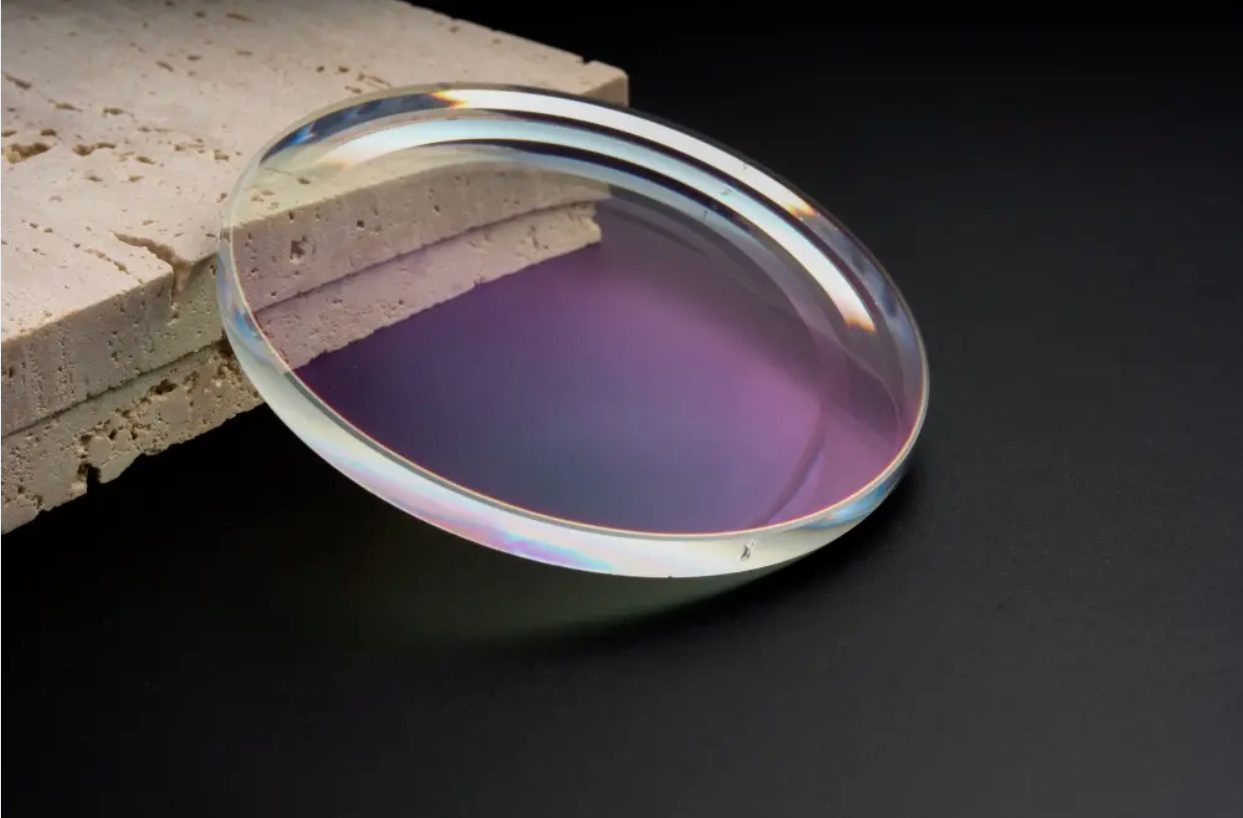Progressive lenses
Progressive lenses
Couldn't load pickup availability
Progressive lenses provide clear vision at all distances near, intermediate, and far without the visible lines of bifocals. While most people adjust quickly, some may need more time to adapt. We recommend wearing them for at least two weeks before making any changes. After this period, we can review further options in line with our warranty policy to ensure your comfort and satisfaction.
Share

FAQ
Why are there so many lens options?
There are many material options for eyeglasses because different materials offer unique benefits in terms of weight, durability, flexibility, appearance, and comfort. Some materials are designed for strength and impact resistance, while others prioritize lightweight wear or hypoallergenic properties. This variety allows patients to choose frames and lenses that best match their lifestyle, fashion preferences, vision needs, and budget.
How do I choose the right lens material?
Choosing the right lens material depends on your prescription, lifestyle, budget, and personal preferences. Here are key factors to consider:
1. Prescription Strength
- High prescription? Go with high-index lenses — they’re thinner and lighter than standard plastic or glass.
- Low to moderate prescription? Polycarbonate or standard plastic (CR-39) may be sufficient.
2. Lifestyle & Safety
- Active lifestyle or sports? Polycarbonate or Trivex lenses are impact-resistant and ideal for safety.
3. Weight & Comfort
- Lighter lenses reduce pressure on your nose and ears. High-index, polycarbonate, and Trivex are all lightweight options.
4. Visual Clarity
- Trivex provides excellent optical clarity with more durability than polycarbonate.
5. Cost
- Standard plastic lenses are usually the most affordable.
- High-index and Trivex are more expensive but may be worth it for comfort and aesthetics.
Tell me more about the lens options.
CR-39 (Standard Plastic) CR-39, short for “Columbia Resin #39,” is a lightweight plastic lens material that offers excellent optical clarity and affordability. It’s a popular choice for everyday wear and is especially suitable for low to moderate prescriptions. CR-39 is thicker than other modern materials and doesn’t provide impact resistance, so it’s not ideal for children, athletes, or people who need extra durability. However, it’s easy to tint, making it great for sunglasses and fashion lenses. It also provides some natural UV protection but typically requires an additional coating for full UV blocking.
Best for: Everyday wearers with mild prescriptions who want clear optics at an affordable price.
Polycarbonate Polycarbonate lenses are known for their durability and high impact resistance, making them ideal for children, sports enthusiasts, and safety glasses. They are thinner and lighter than CR-39 and come with built-in 100% UV protection. While their optical clarity is slightly less than CR-39 or Trivex, they are a practical and safe option for active lifestyles. Their toughness also makes them a top choice for semi-rimless or rimless frames, which put more stress on the lens edges.
Best for: Active individuals, kids, or anyone needing a tough, lightweight, and safe lens.
Trivex Trivex is a newer material that combines many of the best features of polycarbonate with improved visual clarity. It is lightweight, highly impact-resistant, and offers excellent optical performance. Trivex lenses have a lower index than polycarbonate, so they may be slightly thicker for higher prescriptions, but they are extremely comfortable to wear due to their low weight. Like polycarbonate, they also provide full UV protection and are highly durable, making them ideal for active lifestyles and rimless frames.
Best for: Those who want safety, comfort, and better visual clarity, especially in active or demanding environments.
1.67 High-Index 1.67 high-index lenses are significantly thinner and lighter than standard plastic or polycarbonate lenses, making them ideal for individuals with moderate to high prescriptions who want a more attractive, streamlined appearance. These lenses reduce edge thickness in strong prescriptions, minimizing distortion and “bug-eye” or “shrunken-eye” effects often seen with thicker lenses. They also support most lens coatings, including anti-reflective, scratch-resistant, and photochromic options.
Best for: People with stronger prescriptions looking for thin, lightweight, and cosmetically appealing lenses.
1.74 High-Index 1.74 high-index lenses are the thinnest and lightest lens material currently available, specifically designed for very high prescriptions. These lenses offer exceptional cosmetic appeal by dramatically reducing thickness and weight. Despite being extremely thin, they still provide excellent optical performance and can accommodate a full range of coatings and features. Due to their density and cost, they’re typically reserved for those with significant refractive errors who want the best in lens appearance and comfort.
Best for: Those with very strong prescriptions who want the thinnest, most lightweight, and aesthetically pleasing lenses possible.
Each lens material has its strengths, and the right one for you will depend on your prescription, lifestyle needs, frame choice, and budget. An eye care professional can help you weigh these factors and choose the best option for your vision and comfort.
